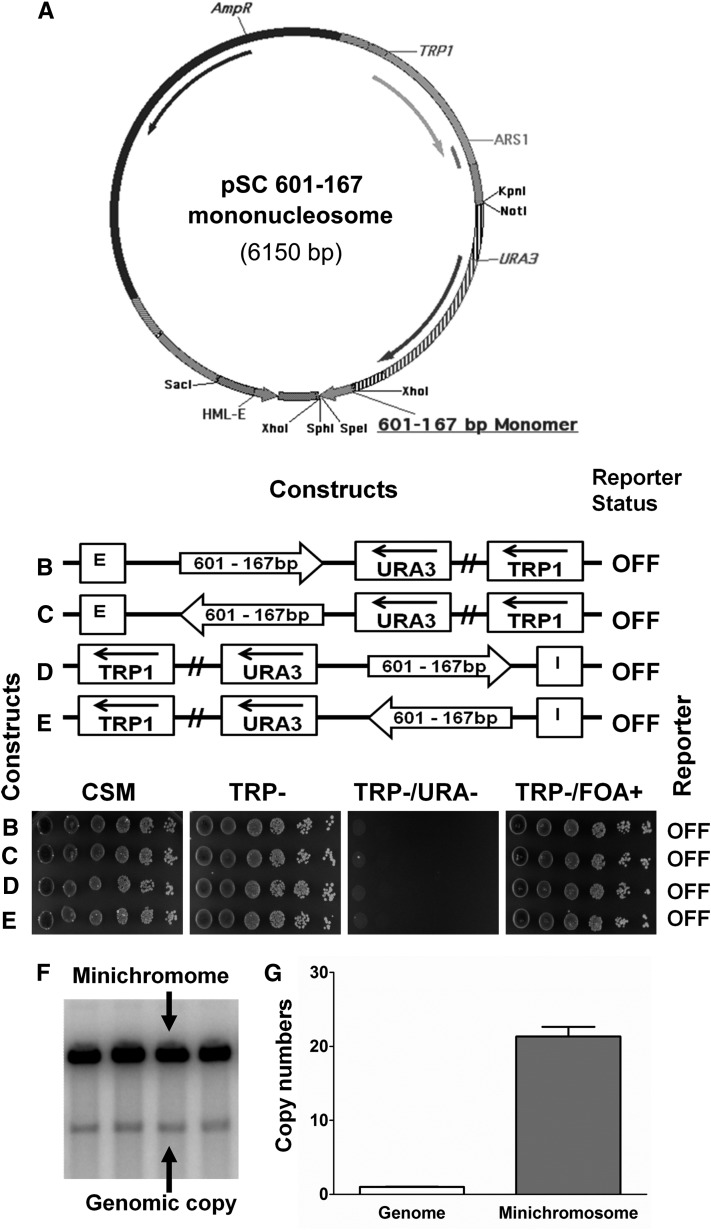Figure 1.
A minichromosome reporter system to study silencing conductance through nucleosomes. (A) Physical map of one of the TRP1-ARS1-derived clone-601 DNA containing minichromosome constructs. This example contains a 167 bp clone-601 mononucleosome placed between XhoI and SpeI sites in a minichromosome containing the HML–E silencer element and the URA3 reporter gene. Other minichromosome constructs contain either monomers or nucleosome arrays of 167, 172, or 207 bp positioned between the E-silencer (placed between SacI and XhoI sites) or I-silencer (placed between NotI and KpnI sites) and the URA3 reporter gene in different orientations (see schemes in Table S2). (B–E) The 167 bp fragment containing nucleosome positioning sequence of clone-601 DNA (shown by arrows) was positioned between the HML–E silencer (B and C) or the HML–I silencer (D and E) and the URA3 reporter in different orientations. The URA3 reporter gene expression status (on or off) was assayed by the growth phenotypes of S. cerevisiae cells containing various minichromosome constructs tested in the indicated selective media by serial dilutions. The clone-601 monomer did not inhibit the silencing of the URA3 reporter gene by either the E-silencer or the I-silencer. (F) Southern hybridization of linearized minichromosomal and genomic DNA probed with a radiolabeled TRP1-ARS1-containing fragment. Four independent clones were transformed with a minichromosome construct containing the clone-601 mononucleosome DNA placed between the HML-E silencer and the URA3 reporter. (G) Histograms showing minichromosome copy numbers quantified by scanning of the Southern blots (such as shown in F) and normalized to the genomic TRP1-ARS1 signal. Error bars represent standard deviations. Where absent, error bars are too small to be visualized.

